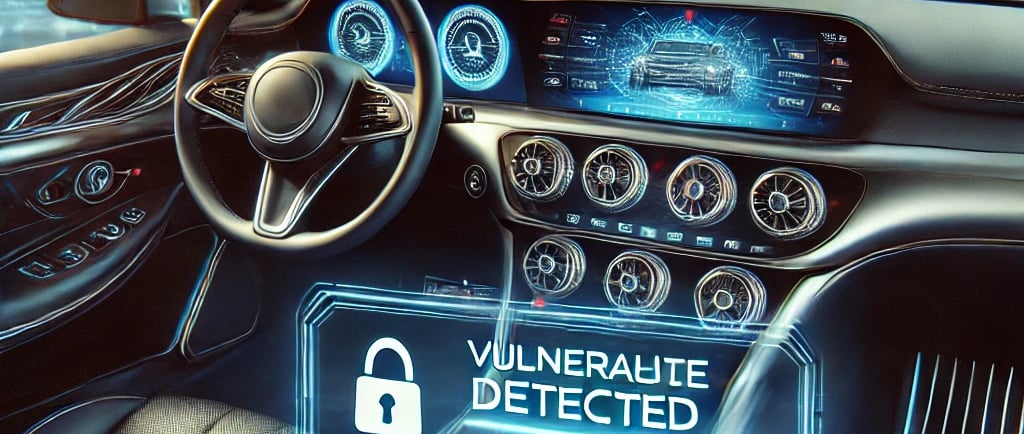The Hidden Risks of Luxury: Mercedes-Benz Infotainment Vulnerabilities Uncovered
Recent revelations about vulnerabilities in Mercedes-Benz's infotainment systems highlight just how significant these risks can be.
VULNERABILITY
1/31/20252 min read


The Hidden Risks of Luxury: Mercedes-Benz Infotainment Vulnerabilities Exposed
In an era where vehicles are no longer just modes of transport but sophisticated, interconnected systems, the security of their digital components is as crucial as their physical integrity. Recent revelations about vulnerabilities in Mercedes-Benz's infotainment systems highlight just how significant these risks can be.
What Happened?
Security researchers from Kaspersky disclosed details about over a dozen vulnerabilities within the infotainment system of certain Mercedes-Benz models. These vulnerabilities range from minor bugs to critical flaws that could potentially allow attackers to take control of some system functionalities. Exploits could lead to compromised privacy, unauthorized access to vehicle systems, and even potential safety hazards.
The vulnerabilities were identified in the onboard communication systems, which connect vehicles to external networks such as mobile apps, navigation services, and cloud systems. As vehicles become more integrated with the Internet of Things (IoT), the attack surface grows exponentially.
The Risks at Stake
1. Privacy Breaches: Infotainment systems store a wealth of personal information, including contact details, navigation history, and even synced data from smartphones. A breach could expose sensitive data, leaving users vulnerable to identity theft or tracking.
2. Vehicle Control: While no reports suggest that these vulnerabilities could directly control critical driving functions, they underline the potential risks associated with poor cybersecurity in vehicles. Imagine a scenario where hackers manipulate system alerts or block access to essential features—the consequences could be dire.
3. Broader IoT Implications: Modern luxury vehicles like Mercedes-Benz are a hub of IoT devices, with connections to mobile apps, voice assistants, and other systems. A vulnerability in one component could create a domino effect, exposing interconnected systems to further exploitation.
Mercedes-Benz’s Response
Mercedes-Benz has reportedly issued patches for the identified vulnerabilities, working closely with Kaspersky to address the flaws. The automaker also emphasizes the importance of keeping software up-to-date to ensure optimal security.
What This Means for Consumers
As cars become smarter, consumers need to start treating them like any other connected device. Here are some tips to safeguard your vehicle:
- Update Software Regularly: Always install updates provided by the manufacturer. These patches often address known vulnerabilities and enhance system security.
- Limit Data Sharing: Avoid syncing sensitive information unless absolutely necessary. Be mindful of the data your car’s infotainment system collects and stores.
- Use Secure Connections: When using external devices or apps, ensure they come from trusted sources and use encrypted connections.
Implications for the Automotive Industry
This incident serves as a wake-up call for automakers to prioritize cybersecurity in their designs. The automotive industry must adopt best practices from traditional IT sectors, including regular penetration testing, secure software development lifecycles, and robust incident response strategies.
The Road Ahead
As vehicles evolve into rolling computers, cybersecurity can no longer be an afterthought. Mercedes-Benz’s proactive response to this issue is commendable, but it’s clear that the industry as a whole has a long journey ahead to ensure the safety and privacy of its customers.
This incident is a stark reminder that even luxury comes with its risks. For consumers and manufacturers alike, vigilance is key to navigating the complexities of a connected world.

